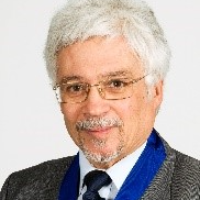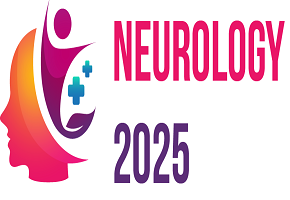3rd International Conference on
Neurology & Neurological Disorders
November 06-07, 2025 | London, UK
Address: Building A, Bath Road, Heathrow Boulevard, Sipson, West Drayton, UB7 0DU, United Kingdom
Neurology 2025

Keele University, UK
Abstract:
Traumatic Spinal Cord Injury (TSCI) is a rare but complex condition. The incidence differs geographically between 10-50 patients/million population/year. The low incidence together with the unstable physiological impairment of the autonomic nervous system caused by the cord damage result in generalised multisystem physiological impairment malfunction that is both dynamic and erratic. This malfunction is in most cases associated with loss of protective sensory functions. The combination of sensory loss, generalised physiological impairment and multi-system malfunction present considerable diagnostic and management challenges that significantly heighten the risk of a wide range of complications that are difficult to diagnose. This risk is further heightened when clinicians are not familiar with the condition and/or are not supported by health professionals who are equally familiar with the presentation and management of these patients from the early hours of injury and who are involved in all stages of management. It is therefore not surprising that before the second world war (WW), despite the great interest shown by many clinicians in the various methods of management of the injured spine, the great majority of patients with TSCI died. The outcome of the condition was transformed during the 2nd WW when Guttmann, supported by a multidisciplinary team took full responsibility of a large number injured soldiers and officers from an early stage following injury. They familiarised themselves with the range and complexity of the medical and non-medical problems caused by cord damage and adopted a holistic care approach to the injured spine, the systemic medical effects of cord damage as well as the non-medical effects on patients and family members. They patients can patients can achieve a significant degree of independence and live healthy, enjoyable, productive and often competitive long lives.They also demonstrated that provided systemic complications are prevented and the injured spinal cord is protected from further mechanical damage many patients can recover some motor power and some initially paralysed patients can regain enough power in the lower limbs to ambulate again with or without support.The prognostic indicators of spontaneous neurological recovery (without intervention on the injured spine) were subsequently studied by Frankel and his colleagues in 612 patients in the mid-sixties and published in 1969. They established that Sensory Sparing is a good prognostic indicator of motor activity and that sensory-motor sparing is a good prognostic indicator of further improvement of motor power. Folman and El Masri in 1989 highlighted the added value of pin prick sensation over posterior column sensation in predicting the return of motor activity suggesting that this could be due to the proximity of the spino-thalamic to the cortico-spinal tract and the reactivation of the motor neurone adjacent to the spared sensory tract. Surprisingly this improvement of motor power occurs irrespective of the radiological presentation including the degree of canal encroachment on admission and on discharge. I will during my presentation discuss the implications of these findings on the various current methods of management of the injured spine.
Biography:
Trained between 1971 &1983 in Spinal Injuries (SI) and the allied surgical specialities in the Oxford Group of hospitals, Guys Hospital, Stoke Mandeville hospital and the USA. Appointed Consultant Surgeon in Spinal Injuries and Director of the Spinal Injuries Centre at the Robert Jones and Agnes Hunt Orthopaedic Hospital in 1983. Personally treated and provided long life care to over 3,000 SI patients with and without Cord damage. Published over 150 manuscripts including incidence and clinical presentation of Post-Traumatic Syringomyelia in a population monitored for 20 years. Lectured worldwide. Authored the Concepts of “Physiological Instability of the Spinal Cord”, “Time related Biomechanical Instability”, “Hypothesis of Micro-instability of the injured spine” He is Past President International Spinal Cord Society and Past Chairman British Association of Spinal Cord Injury Specialists. Advised WHO & (NICE). He won many National and International awards.
